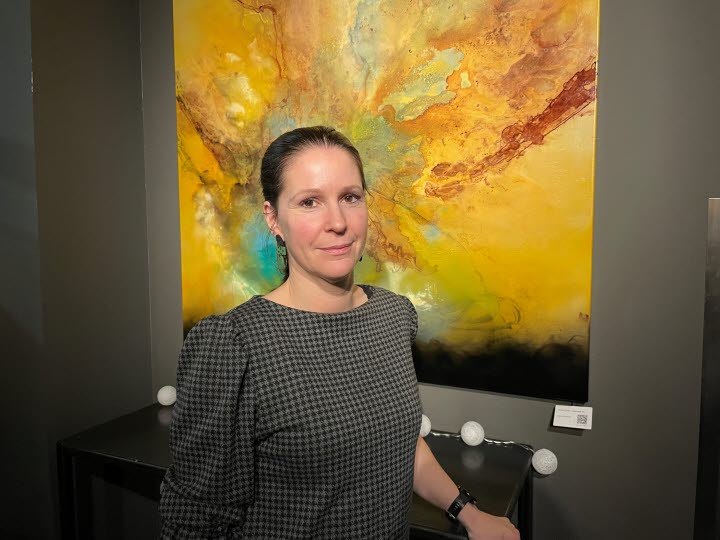Nordic cooperation for increased circularity of textiles

The textile industry is one of the most polluted industries in the world and is estimated to account for ten percent of global carbon dioxide emissions. Despite this, clothes and home textiles are not handled according to the waste hierarchy, where priority should be given to prevent generation of waste, followed by reuse and recycling and, as the last options, incineration and safe disposal. A Nordic collaborative project, SATIN (Towards a sustainable circular system of textiles in the Nordic region), aims to create conditions for the increased circularity of textiles in the Nordics.
Huge amounts of clothes and home textiles are thrown away in the Nordic countries, and often unnecessarily. The Nordic region is a large consumer of textiles. In Sweden, we consume around 14 kg of clothes and home textiles per person annually. Although parts of these are circulated within families, among friends, via second-hand sales or donated to non-profit second-hand operators, the majority of our used textiles are thrown away. In Sweden alone, about eight kilograms of textiles per person and year are thrown away and go then directly to incineration, even though over half of these could be reused or recycled if they were collected separately. Of those collected separately, most are exported abroad for sorting and reuse. A small percentage are recycled, but most are “downcycled”, with the fabric becoming rags or insulation materials.
The SATIN project aims to develop and test logistics solutions connected to collection and sorting. This project, led by the Swedish National Road and Transport Research Institute (VTI), ran from 26 August 2020 to 1 December 2022 and involved 24 organizations and companies based in Sweden, Norway, Denmark, and Finland. Under the EU’s Waste Framework Directive, all Member States must be collecting textiles separately from other waste by 1 January 2025 at the latest. This means that larger volumes will need to be managed, and yet it will become increasingly difficult to find an outlet for these volumes. Over 40 countries have already stopped the import of used textiles, and with the increased volumes the quality of the textiles will decrease. This means that the Nordics must become better at collect textiles from consumers and organizations, reusing more locally, and increasing the recycling of textiles that cannot be reused.
“There are enormous challenges associated with recycling and it is currently difficult to make these flows economically feasible,” says Linea Kjellsdotter Ivert, senior researcher at VTI and project manager for SATIN. “To be able to recycle textiles, they need to be sorted by fibre type and often also by colour, which is costly. There is no organized collection of textiles that cannot be reused but hopefully could be recycled. On the positive side, several initiatives are being implemented, not least in the Nordics, and many automated sorting and recycling facilities are established.”
The project analysed data from nine pilot studies of different collection solutions to study the advantages and disadvantages of collection solutions and when they are appropriate to use.
“It became clear that there is not one best solution,” says Kjellsdotter Ivert, “rather that collection methods are appropriate to different degrees in different contexts. What applies generally, however, is that the consumer has an incredibly important role in the collection system. Quite a lot is demanded of the consumer today and it’s not always clear what we should do to pass on our used textiles. It must be easy to do the right thing.”
In the project, the researchers investigated whether the Nordic region has enough capacity in automated sorting and recycling to meet the upcoming volumes of recyclable textiles. The findings indicate that the planned capacity in automated sorting and recycling facilities in the Nordic countries will be sufficient to handle the total recyclable fraction, except for certain synthetic fibres, that is generated in the Nordics. There are imbalances, however, within individual countries, which means that there is a need for cooperation.
“In Sweden, for example,” says Linea Kjellsdotter Ivert, “we will have an overcapacity for cotton recycling, but we lack the capacity for recycling polyester, which Norway, on the other hand, is building up. It is therefore important that we cooperate on sorting and recycling so that individual countries don’t make unnecessary investments but also so that we see the Nordics as a region and reduce unnecessary transports by exporting textiles abroad when they can be taken care of here.”
Partners
Aalborg University, Aalto University, Avfall Norge, Avfall Sverige (Swedish Waste Management Association), Better World Fashion, BjörkåFrihet, Chalmers Industriteknik, Convert, DHL, Fastighets AB Balder, Kretslopp och vatten Göteborgs stad, Göteborgsregionen, Integrate, Kruse Vaskeri, Kungälv kommun, Mölndals stad, NTNU (Norwegian University of Science and Technology), Nudie Jeans, Röda korset, Trasborg, TRV Gruppen, UFF, VESAR, Swedish National Road and Transport Research Institute (VTI).
SATIN is funded by Nordic Innovation.
The report SATIN – Project End Report (2022 Digitala Vetenskapliga Arkivet DiVA) External link.
External link.
Text: Tiina Mauritzell/VTI
Translated by: CBG Konsult & Information AB
Don´t miss out on our news – subscribe now!
Stay informed with the latest research and news from VTI. Sign up for newsletters, sent by e-mail four times a year.
